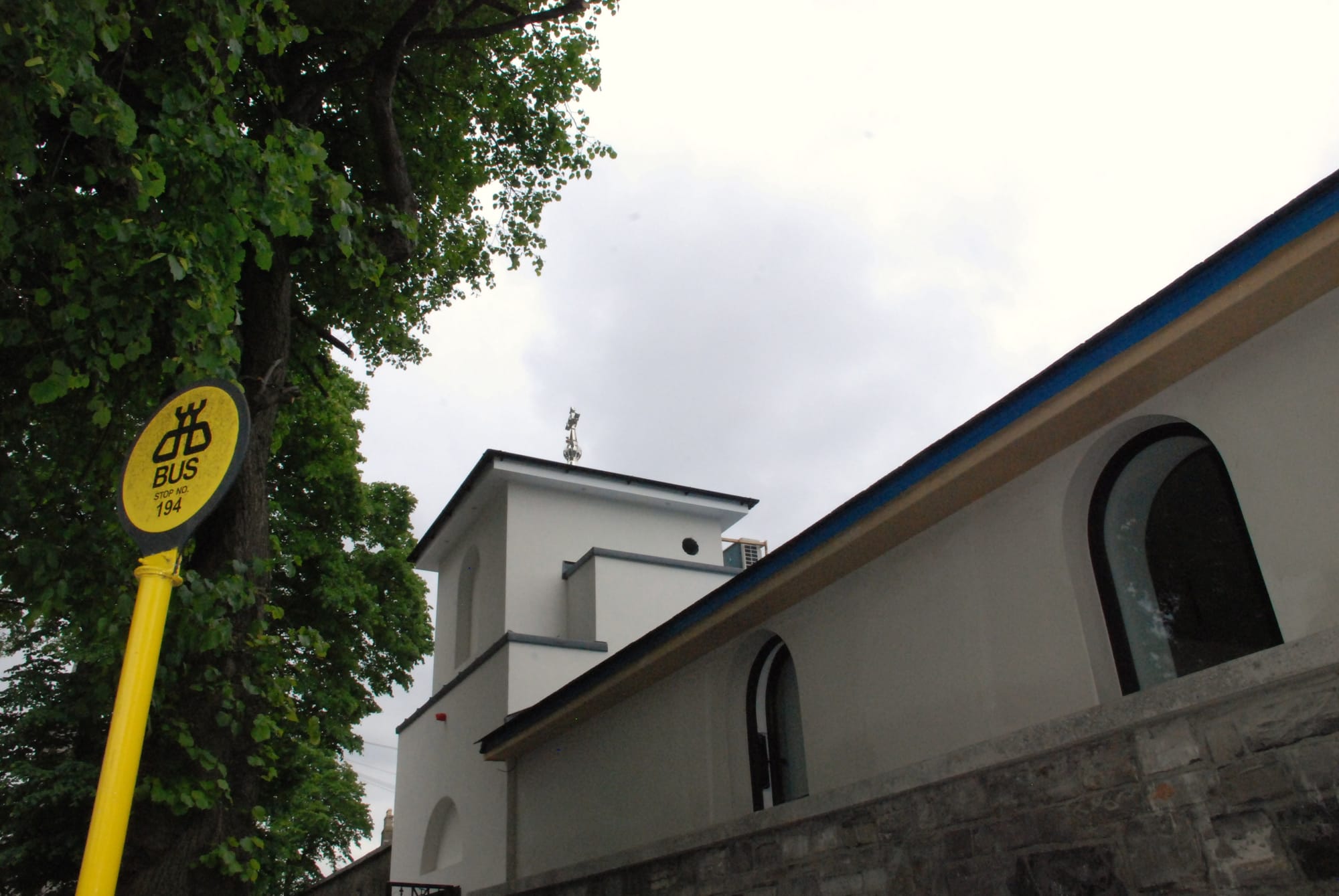Central government is looking at whether councils should be allowed to borrow more, to build more
The current restrictions do need to change, said a spokesperson for the Department of Finance.
Ioan Irineu Craciun used to minister in an industrial estate out of town. Now, he and his congregation have done up an old building in the city, to serve a growing Romanian Orthodox Church.

Father Ioan Irineu Craciun flicks a small light switch to the side of the vestry. The church interior brightens, as yellows and golds bounce off a cold concrete floor.
This new place of ministry on Western Way – a short thoroughfare that leads down to Broadstone in Phibsboro – is nearly complete. It’s an improvement on what was previously a “humiliating situation”, he says.
For seven years Fr Craciun and members of the Romanian Orthodox community worshipped in a cramped, prefabricated industrial unit in Blanchardstown.
“It had no windows even” says Fr Craciun. “So we started searching for a new place.”
Fr Craciun arrived in Ireland from Romania in 1981 as a postgraduate student, completing his studies at Maynooth University in 1987.
Outside of his ministry as parish priest for Dublin’s Romanian Orthodoxy, he teaches lessons in liturgy.
He pulls a seat from a row of wicker chairs that line the church’s walls. Fresh, white paint catches the gold of nearby religious icons, while outside, through high semi-circular windows, the passing traffic has died down.
Before Fr Craciun was relocated in 2010 to minister to the Romanian community, he spent 29 years ministering to members of the Greek Orthodoxy in Arbour Hill.
But when he was relocated, he found the conditions in Blanchardstown needed redress. “All around there was industrial activities. There were cars and vans and lorries,” says Fr Craciun. “At the same time I was grateful that we had a place to go to.”
One day, Fr Craciun happened upon the abandoned and derelict St Dominic’s Youth Club on Western Way. “It was four years to sort it out at a legal level,” he says.
The space has changed hands many times over the six year period Fr Craciun was eyeing it. This made it unclear just who was responsible for the wreck, he says. Eventually, Bank of Ireland was appointed as the receiver.
“The whole building was in dreadful condition,” he says. “When we inspected it we realised that the whole roof had to go.”
Outside, hundreds of slates stretch across sills on the left, waiting to be tacked onto the roof.
Although the project is near completion, says Fr Craciun, it would have been impossible without a Romanian community determined to leave the industrial estate.
“We have no sponsorship from outside, outside the parish,” he says. “It means that everything here is the result of hard labour and deep sacrifice made by our community.”

An Old-Fashioned Meitheal
The Central Statistics Office doesn’t list data for the number of Romanian Orthodox in Ireland.
The number of Romanians has grown though, from 17,304 people in 2011, to 29,186 people in 2016, its data shows.
It has been “phenomenal” growth, says Fr Craciun, one hand resting on black cassock, the other drifting through his long, grey beard.
“Up to the collapse of communism in Europe, in 1989, there weren’t many in Ireland,” he says. “It was in 1991, two years after the revolution, that there was an influx.”
After Romania joined the European Union in 2007, the figures continued to grow. An industrial unit, therefore, was insufficient for Romanian Orthodox families in Dublin, says Fr Craciun.
“Seeing the situation of men, women and children worshipping in an industrial unit was quite an impossible thing to take,” he says.
They took out a €250,000 mortgage, to be repaid over eight years. Fr Craciun says the Romanian community to whom he ministers took the project seriously from the off. “I have been privileged to be the parish priest to such a group of people,” he says.
One community member, Mihai Oprisan, took the role of project manager. “He put his very best into building this place,” says Fr Craciun, leading me towards the altar.
Oprasi’s enthusiasm made others step up to the plate: builders, plasterers, carpenters, electricians, and steelworkers. Those who now come to worship got to work.
“All these people put all their work in free of charge,” says Fr Craciun, pointing left to a small alcove where the gifts are prepared.
The Church of the Annunciation is bound on one side by Western Way, and on the other by housing. Because of this tight space, says architect Chris Ryan, the build was a challenge.
“You’ve got the planning regulations, the building regulations, the fire regulations, disability regulations. It was a bit of a jolt trying to get all of those to gel,” says Ryan.
Throughout construction, Ryan observed the men and women from the community come and go, depending on their skills. “It was an old-fashioned meitheal, as we say in Irish,” he says.
The group of labourers applied to Dublin City Council for extensions to work late hours, laboured Saturdays, and transformed the derelict youth club over nine months.
“Coming together they were motivated by what they can achieve,” says Fr Craciun. “That is an extraordinary thing.”
[CORRECTION: This article was updated on Thursday 1 June at 10.23am, to correct the spellings of the surnames of Fr Craciun and Mihai Oprisan. Sorry for the errors.]